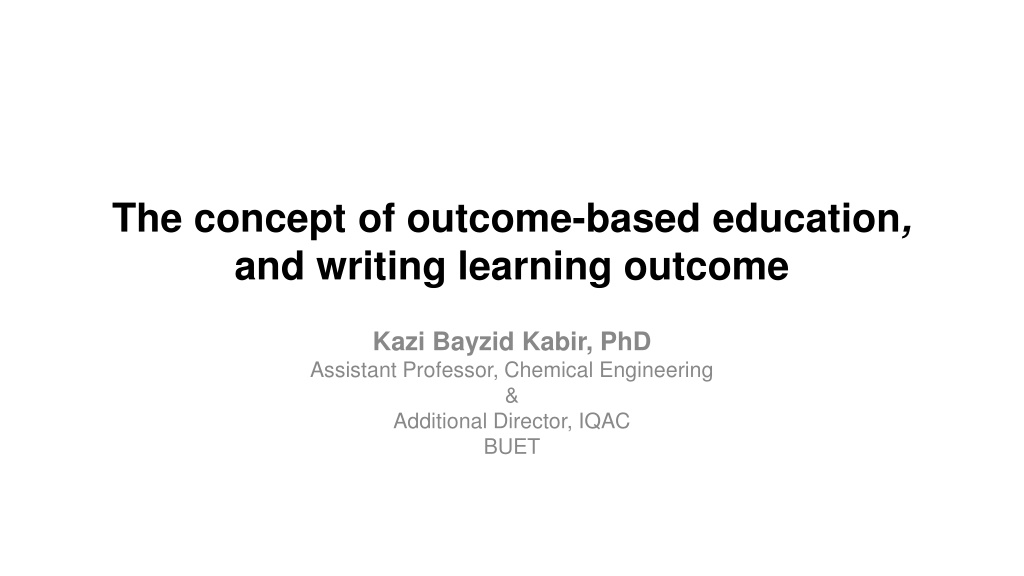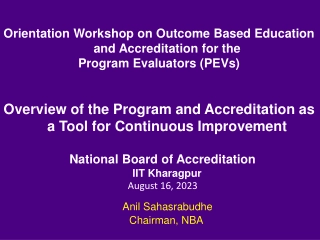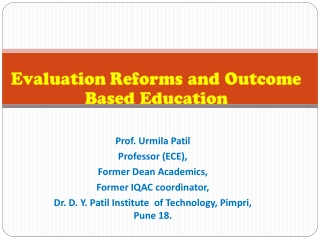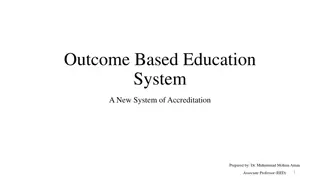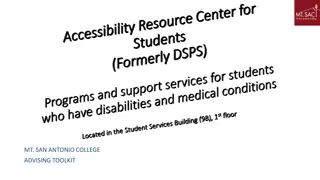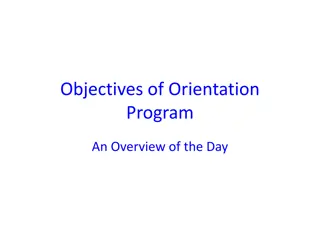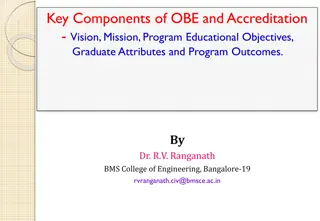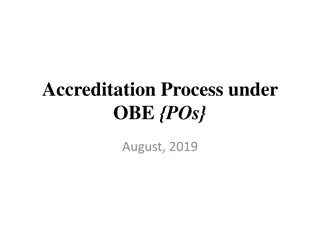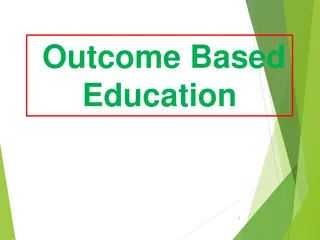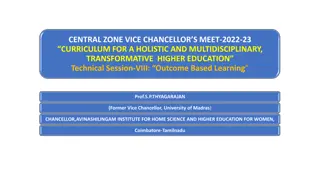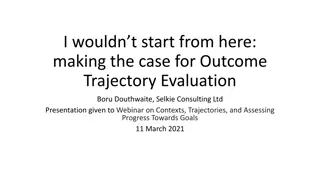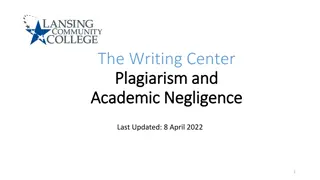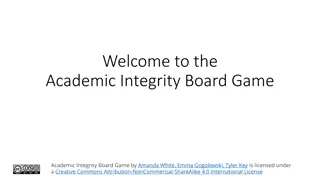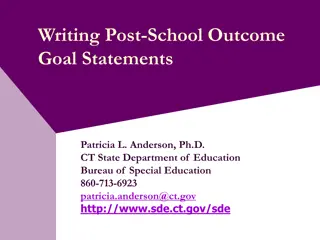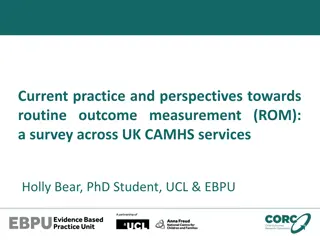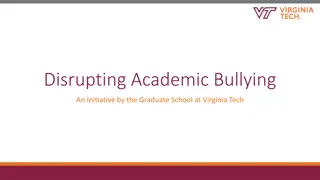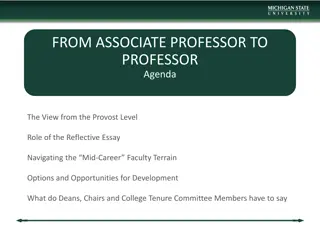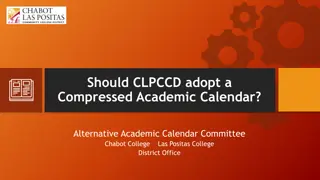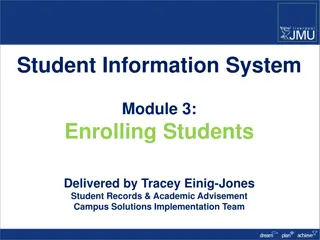Understanding Outcome-Based Education in Academic Settings
Outcome-Based Education (OBE) is an educational approach that focuses on student learning outcomes, emphasizing skills and qualities beyond academic knowledge. It involves formulating Program Educational Objectives (PEO), Program Outcomes (PO), and Course Outcomes (CO), all aimed at achieving clear learning objectives. OBE requires continuous assessment and documentation to ensure students meet predefined standards. Employers value candidate skills and qualities over GPA, highlighting the importance of graduate attributes.
Download Presentation

Please find below an Image/Link to download the presentation.
The content on the website is provided AS IS for your information and personal use only. It may not be sold, licensed, or shared on other websites without obtaining consent from the author. Download presentation by click this link. If you encounter any issues during the download, it is possible that the publisher has removed the file from their server.
E N D
Presentation Transcript
The concept of outcome-based education, and writing learning outcome Kazi Bayzid Kabir, PhD Assistant Professor, Chemical Engineering & Additional Director, IQAC BUET
The percentage of employers that plan to screen graduates by GPA Median GPA cutoff 3.0 Source: NACE, Job outlook 2016. The National Association of Colleges and Employers (2015)
Employers rate the importance of candidate skills/qualities Source: NACE, Job outlook 2016. The National Association of Colleges and Employers (2015)
Graduate attributes Graduate attributes are the qualities, skills and understandings a university community agrees its students should develop during their time with the institution. These attributes include but go beyond the disciplinary expertise or technical knowledge that has traditionally formed the core of most university courses. They are qualities that also prepare graduates as agents of social good in an unknown future
Abbreviations CO: Course outcomes NACE: The National Association of Colleges and Employers OBE: Outcome-based education PEO: Program Educational Objectives PO: Program outcomes
The concept of Outcome-based education (OBE) OBE as an educational model in which curriculum and pedagogy and assessment are all focused on student learning outcomes
Simple concept of OBE Faculty publicly articulate assessment information in advance of instruction. Students are able to direct their learning efforts to clear expectations. Student progress and completion of learning outcomes are determined by achievement of learning outcomes
Implementing OBE Formulate PEO, PO, CO Prepare CO-PO matrix make sure that each PO is covered in at least a few courses Questions should be designed to address all CO Analyse the course results in terms of CO set indicator for achievement, then check if the target is achieved End of semester analyze CO, PO achievement for each cohort or batch, and each student End of graduation semester analyze all CO, PO achievements for each cohort or batch, and each student Achievement of PEO a few years after graduation EVERYTHING MUST BE DOCUMENTED For independent verification
Defining learning outcomes Learning outcomes are statements describing our intentions about what students should know, understand, and be able to do with their knowledge when they have graduated Define what students should be able to demonstrate or represent at the end of a course, a class session, and so on Learning outcomes tell us specifically what needs to be assessed
Mission, Vision of University Hierarchy of outcomes Program Educational Objectives (PEO) Few years after graduation Program Outcomes (PO) Year 4 Year 4 Course Outcomes (CO) Course 1 Course 2 Others Year 3 Year 3 Year 2 Year 2 Year 1 Year 1
Definitions Program Educational Objectives (PEO) Program educational objectives are broad statements that describe the career and professional accomplishments that the program is preparing graduates to achieve Program Outcomes (PO) Program outcomes are narrower statements that describe what students are expected to know and be able to do by the time of graduation. These relate to the skills, knowledge, and behaviors that students acquire in their matriculation through the program. Course Outcomes (CO) Course outcomes are even narrower statements that describe what students are expected to know and be able to do at the end of the course
Different terminologies Program Educational Objectives (PEO) Program Objectives Program Outcomes (PO) Student Outcomes Program Learning Outcomes Course Outcomes (CO) Learning Outcomes
To be defined by the program Mission, Vision of University Program Educational Objectives (PEO) Broadly prescribed by accreditation bodies, like ABET Course Program Outcomes (PO) Outcomes (CO)
Program outcomes (a) through (k) (ABET) a) b) c) an ability to apply knowledge of mathematics, science, and engineering an ability to design and conduct experiments, as well as to analyze and interpret data an ability to design a system, component, or process to meet desired needs within realistic constraints such as economic, environmental, social, political, ethical, health and safety, manufacturability, and sustainability an ability to function on multidisciplinary teams an ability to identify, formulate, and solve engineering problems an understanding of professional and ethical responsibility an ability to communicate effectively the broad education necessary to understand the impact of engineering solutions in a global, economic, environmental, and societal context a recognition of the need for, and an ability to engage in life-long learning a knowledge of contemporary issues an ability to use the techniques, skills, and modern engineering tools necessary for engineering practice. d) e) f) g) h) i) j) k)
Learning outcomes for today! At the end of this session we will be able to 1. Develop and critique learning outcomes 2. Explain how learning outcomes direct curriculum development, planning of pedagogy, and program or institutional accountability
Dimensions of learning outcomes Knowledge outcomes: Cognitive content Skills outcomes: application, basic skills, higher-order cognitive skills, knowledge-building skills Attitude and values outcomes: affective outcomes, personal/professional/social values, ethical principles Behavioral outcomes: a manifestation of the knowledge, skills, and attitudes; performance and contributions
Sources of learning outcomes Goals: Translating to learning outcomes
Learning outcome for the goal Critical thinking Students will approach an issue or problem from multiple perspectives. Students will make claims or arguments based on evidence, information, or research. Students will compare and contrast academic materials and concepts with their community experiences and explain the reasons for the differences Three different approaches to achieve the goal!!
Sources of learning outcomes Goals: Translating to learning outcomes Professional and Disciplinary Associations Future employers, community partners Faculty and students
Ensuring High-Quality Learning Outcomes The very first assurance in designing quality learning outcomes is that all of the sources are considered and used with care. Another critical consideration for high-quality learning outcomes is clarity
Developing outcomes A Faculty dialogue and learning process Big questions such as What do we want our graduates to be able to do and be?
Taxonomies: Support for development Once you begin to articulate some of the answers to the big questions, there is help for your work of developing outcomes Since 1956 educators have used a taxonomy of cognitive levels and learning outcomes, and the taxonomy continues to be relevant for our work
Prioritizing Curriculum Content The taxonomies will help you articulate what you want students to be able to do with the content of your curriculum The cognitive levels from Bloom s taxonomy will help you to prioritize Brainstorming all of the possible content for a course or program Colour coding may be helpful
Finalizing Learning Outcomes reviewing samples and examples of learning outcomes from multiple sources Collaboration is essential Finally, you need to ask yourself, What do I want students to be able to do or be after they finish my course, our program? Once you are satisfied with your answers you have the learning outcomes
Using outcomes as a centrepiece Learning outcomes should be used as a centerpiece for all of your design work, whether it is a program, a course, or a degree The end result will be richer and more meaningful and will benefit from multiple perspectives
Learning outcomes have three parts: Observable action (V): What the student will do that demonstrates learning Under what conditions (C): The context within which the student will demonstrate learning. To what degree of precision (S): How well s/he have to demonstrate his/her learning
Example: Learning outcome of a swimming lesson By the end of this lesson, the learner will be able to swim 100 meters solo in the university pool without any artificial aid in less than 1 minute
To create specific, measurable/observable, and results-oriented objectives Start with an observable action word that captures what the learner should be able to do Avoid ill-defined terms that are open to variable interpretation (e.g., understand, learn, grasp); use instead terms that describe directly observable (e.g. list, describe) When necessary, specify criteria concerning expected standard of performance
To create attainable learning objectives Consider the beginning level of understanding/skill of your learners and craft your objective to move them to the next level Consider and specify when appropriate the conditions under which performance will take place Limit number of objectives to major learning points you would like students to walk away with (5/course)
Points to ponder It is NOT compulsory for every CO to have all 3 learning domains (C,A,P) It is NOT compulsory for every CO to have all 3 components (i.e. V+C+S) But must have at least V+C or V+S CANNOThave 2 verbs in the same domain (e.g. state and explain the basic principles.....), use the highest level of taxonomy only (i.e. explain the basic principles....) Can have 2 verbs in different domains (e.g. explain and display the standard procedure........), BUT must measure both (i.e. there must be assessments for both outcomes) CO can have sub outcomes (e.g. Topic Outcomes, Lesson Outcomes) which might be more detail and can have ALL 3 components to ensure the attainment of the CO.
Fluid Mechanics: Learning outcome Write the exact equations for a fluid flow problem incorporating applicable simplifications VERB CONDITION STANDARD BLOOM s Write incorporating applicable simplifications the exact equations for a fluid flow problem C6
Fluid Mechanics: Learning outcome List and explain five fundamental characteristics of turbulence VERB CONDITION STANDARD BLOOM s Explain five fundamental characteristics C2
A sample course outcome and assessment methods investigate complex reaction systems using PolyMath or other software (C4) In-class assessment design reactors that have multiple reactions taking place under non- isothermal and unsteady conditions (C6) Take home assignment; exam Evaluate the performance of heterogeneous catalytic reactors with diffusional effects (C6) Take home assignment; exam predict the conversion and exit concentrations for non-ideal reactors using RTD data, rate law and reactor models (C6) Take home assignment; exam critique advanced works done in the field of catalysis and reactor design (C5) Oral presentation
Learning outcome for the goal Critical thinking Students will approach an issue or problem from multiple perspectives. Students will make claims or arguments based on evidence, information, or research. Students will compare and contrast academic materials and concepts with their community experiences and explain the reasons for the differences Three different approaches to achieve the goal!!
Learning outcomes for today! At the end of this session we will be able to 1. Develop and critique learning outcomes 2. Explain how learning outcomes direct curriculum development, planning of pedagogy, and program or institutional accountability
